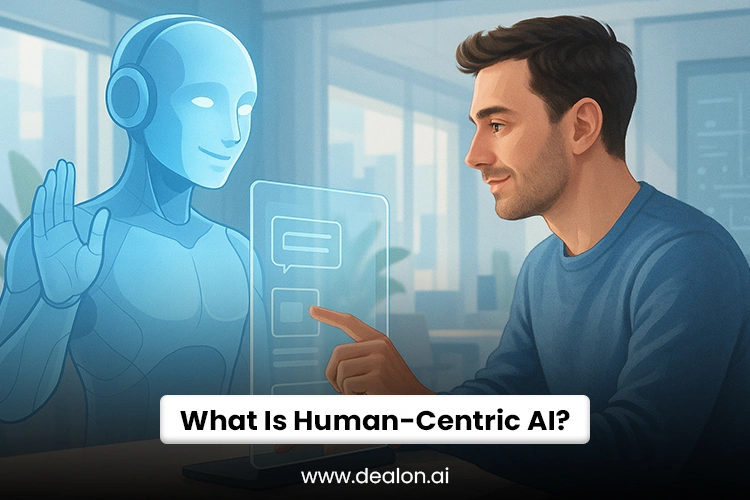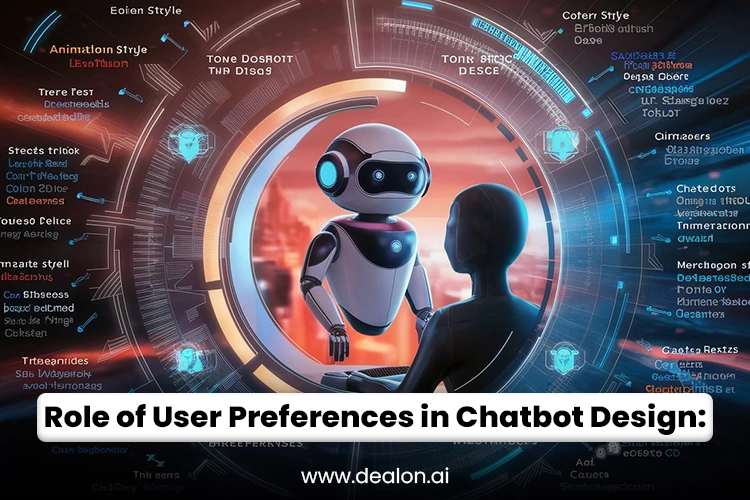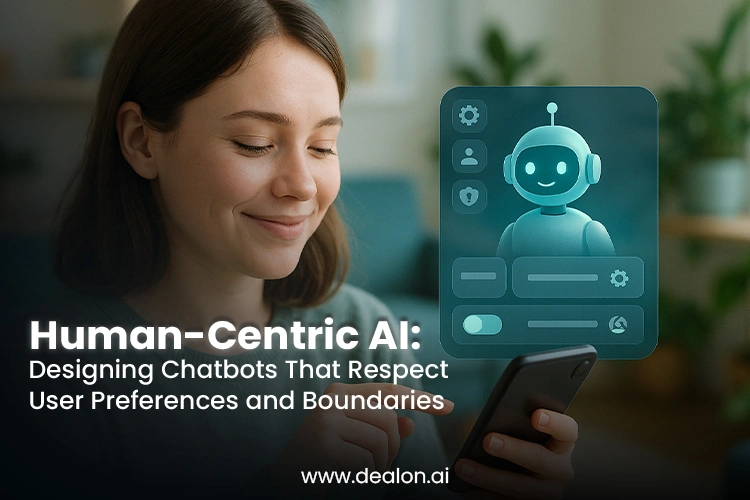AI redefines human-computer interaction, placing chatbots at the vanguard of this transformative shift. No longer confined to rudimentary scripts or static responses, modern chatbots leverage sophisticated algorithms to engage users in dynamic, conversational exchanges. Yet, as their functionality grows, so does the imperative to design these systems with a human-centric ethos.
Respecting user preferences and boundaries has evolved from being a mere design consideration to a critical determinant of trustworthiness and adoption. Users demand digital experiences that are intuitive, empathetic, and adaptive to their individual needs. A chatbot that disregards these expectations risks alienating its audience, no matter how technically advanced it may be.
Human-centric chatbot design combines personalization, ethical governance, and adaptive intelligence. It seeks to balance responsiveness with respect, ensuring users feel understood and empowered rather than overwhelmed or surveilled. The core of this innovation lies in recognizing emotional signals, adjusting to different contexts, and respecting user autonomy.
Also Read: 10 AI-Driven Strategies for Boosting Organic Traffic In 2025
What Is Human-Centric AI?

Human-centric AI represents a paradigm shift in technology, where the focus pivots from algorithmic prowess to enriching human experiences. It embodies a philosophy that prioritizes user-centricity, ensuring that AI systems are efficient but also empathetic, ethical, and inclusive. At its core, human-centric AI seeks to align technological advancement with the values, preferences, and needs of the individuals it serves.
In the context of chatbots, this approach goes beyond mere functionality. It involves creating digital assistants that are attuned to user preferences, such as conversational tone, interaction style, and desired level of engagement. These systems must be intuitive enough to understand the content of a user’s query and its emotional undertones, adapting responses to provide meaningful and contextually appropriate interactions.
Innovative human-centric AI incorporates advanced features like real-time sentiment analysis, allowing chatbots to gauge user emotions and tailor their communication accordingly. For instance, a chatbot assisting with mental health support can detect distress signals in a user’s language and adjust its responses to be more compassionate and calming.
Privacy, a cornerstone of human-centric design, is equally critical. Chatbots must handle data with transparency and integrity, offering users control over how their information is collected, stored, and used. By respecting these boundaries, AI systems can build trust while delivering personalized experiences.
Moreover, human-centric AI fosters empowerment by enabling users to make informed decisions. Rather than dictating outcomes, these systems act as collaborators, guiding users with clarity while respecting their autonomy.
The Role of User Preferences in Chatbot Design

The evolution of chatbot technology has redefined the user experience by emphasizing the importance of personalization and adaptability. In today’s digital landscape, users demand more than rote efficiency; they seek conversational engagements that mirror their preferences, values, and unique expectations. Incorporating user preferences into chatbot design is no longer a luxury—it is a cornerstone of human-centric AI, fostering deeper connections and enhanced satisfaction.
Modern chatbots utilize natural language processing (NLP) and machine learning to analyze and adapt to each user’s behavior and preferences. This context awareness allows them to recognize preferences such as tone, language, or response length, crafting genuinely personalized interactions.
For instance, a healthcare chatbot could discern that a particular user values brevity, delivering updates in succinct, digestible formats while avoiding unnecessary jargon. Similarly, an educational chatbot might adapt its communication style to suit a learner’s pace, simplifying explanations for novices or offering detailed insights for advanced users. Such contextual customization improves efficiency and nurtures a sense of trust and rapport.
Personalization must never come at the expense of user privacy. Trust is a fragile currency in the digital era, and chatbots must safeguard it by maintaining transparency about data collection practices. Explicitly informing users about what information is being gathered, why it is needed, and how it will be used is essential for ethical compliance.
Offering users the autonomy to opt out of data collection or delete their interaction histories further solidifies this trust. For example, a financial assistant chatbot could allow users to anonymize sensitive data, ensuring a balance between customization and confidentiality.
A chatbot’s ability to adjust its tone and emotional responsiveness is pivotal to fostering meaningful engagements. By leveraging emotion recognition algorithms, chatbots can identify cues such as frustration or satisfaction, adapting their responses to align with the user’s emotional state.
For example, a legal assistant chatbot might adopt a professional, concise tone when assisting with contract reviews, while a shopping assistant chatbot could employ a friendlier and more conversational style. This adaptability humanizes interactions, making users feel understood and valued.
As chatbots continue to evolve, their capacity to reflect and respect user preferences will define their success. Integrating real-time sentiment analysis, cultural sensitivity, and ethical frameworks into their design will ensure these digital assistants remain trusted companions in an increasingly AI-driven world.
Setting and Respecting Boundaries in Chatbot Design

In the fast-changing landscape of AI chatbots, respecting user boundaries has become more crucial than ever. As these digital assistants become increasingly sophisticated, they must balance personalization and convenience with ethical considerations, ensuring users feel heard and respected. One of the cornerstones of this balance is the ability to establish and uphold clear boundaries during interactions.
Effective intent recognition is foundational to human-centric chatbot design. The ability of a chatbot to discern not only what a user is saying but also why they are saying it allows for more fluid and respectful exchanges. When a user signals that they are frustrated, confused, or no longer interested in the conversation, the chatbot must be capable of adjusting accordingly. If a chatbot detects dissatisfaction, it should escalate the issue to a human operator rather than persist in an unproductive dialogue.
For instance, a customer service chatbot in a retail setting could detect when a user expresses dissatisfaction with a product or service. Instead of continuing to ask follow-up questions, it should offer an option to speak with a live agent. This proactive escalation avoids creating frustration and ensures the user’s issue is handled with the care it deserves.
While AI-driven automation can optimize processes and improve efficiency, it must not infringe on a user’s autonomy. Chatbots should serve as assistants, offering recommendations, suggestions, and information while leaving the ultimate decision-making in the hands of the user.
For example, consider a financial planning chatbot. It can present personalized investment suggestions based on a user’s economic goals, but it should never make binding decisions or initiate transactions without explicit, informed consent. This principle is vital for maintaining transparency and trust, ensuring users feel empowered to make their own choices without being coerced into automated decisions.
One of the most critical aspects of respectful interaction is transparency. Users must always be aware that they are engaging with an AI system, not a human. Misleading or ambiguous chatbot communication can erode trust and cause frustration, particularly in sensitive areas such as healthcare, finance, or legal advice.
A simple but effective approach to maintaining transparency is to include clear disclosures at the beginning of the conversation. For example, a chatbot could say, “I’m here to assist you as your AI chatbot,” making it clear that the user is not conversing with a human agent. Such transparency helps prevent misunderstandings and sets proper expectations, fostering a more respectful and comfortable user environment.
Knowing when to end an interaction gracefully is as important as knowing how to start one. Chatbots should recognize when a user has received the information they need and be capable of smoothly closing the conversation. Over-engaging or bombarding the user with unnecessary follow-ups can be invasive and lead to discomfort. The ability to exit a conversation respectfully—whether through a polite closing message or an option to end the chat at any time—reinforces the chatbot’s role as a helpful assistant rather than an intrusive presence.
Challenges in Balancing Personalization and Boundaries
Personalization is a key driver in enhancing the chatbot experience, enabling digital assistants to tailor their responses to individual needs, preferences, and behaviors. However, as personalization becomes more sophisticated, it introduces a unique set of challenges, especially regarding respecting user boundaries. Acquiring the balance between delivering personalized experiences and avoiding intrusive or overbearing interactions requires thoughtful design and continuous iteration.
While personalization has the potential to create profoundly engaging and relevant interactions, it can also veer into over-personalization—where the chatbot’s behavior becomes too familiar or even invasive. When a chatbot references past interactions, purchases, or personal details without appropriate context, it can make the user uncomfortable.
For example, imagine a chatbot for a retail store that greets a user with, “Welcome back! I see you recently bought a jacket. Would you like to purchase the matching pants?” This behavior can feel overly familiar or intrusive without establishing a clear, context-driven need for such a recommendation. Users might appreciate the personalized suggestion if they’re browsing for similar items. However, if they were seeking essential support or information, such detailed references to their history may cross a boundary.
Overpersonalization can also result in the chatbot failing to adjust when a user becomes uncomfortable. For instance, if the system continually offers personalized suggestions, even after the user has indicated disinterest, it can quickly become frustrating and alienating. This risk highlights the need for chatbots to adapt to user preferences, recognize when to pull back, and allow users space.
User preferences are not universally static; they can vary widely across cultural, regional, and social contexts. What may be seen as personalized and engaging in one environment could be perceived as invasive or inappropriate in another. This complexity challenges chatbots to integrate cultural and contextual sensitivity into their design.
For instance, in some cultures, directness and formality are valued in conversations, and users may expect a more reserved approach to personalization. In contrast, other cultures may appreciate a casual tone and more engaging, informal interactions. A chatbot designed without consideration for these cultural nuances could inadvertently alienate or offend users by misreading these preferences.
Moreover, context is pivotal in determining how far personalization should go. A chatbot might need to keep interactions formal and transactional in a professional setting. In contrast, a more personable and casual approach may be more welcome in a casual setting—such as a retail store or entertainment platform. Striking this balance requires chatbots to understand not just the individual preferences of the user but also the larger cultural and situational context in which the interaction occurs.
Achieving a harmonious blend of personalization and respect for boundaries demands continuous testing, feedback loops, and adaptive learning. Chatbots must be designed to recognize when they are crossing boundaries—whether through overly familiar language or irrelevant personal references—and adjust accordingly. Regular user feedback and the integration of sentiment analysis can be essential tools in detecting these moments of discomfort.
Future Trends in Human-Centric Chatbot Design
As artificial intelligence (AI) continues to evolve, the design of human-centric chatbots is progressing to meet the growing demands for transparency, emotional intelligence, and proactive personalization. The future of these AI-driven interactions is poised to introduce more intuitive, ethical, and user-centered experiences. Several emerging trends are redefining what human-centric chatbots will look like in the coming years.
A significant trend in AI development is the rise of explainable AI (XAI). As chatbots become more complex, users will demand transparency regarding how these systems arrive at conclusions or make recommendations. Rather than merely delivering a response, explainable chatbots will provide users with clear and accessible explanations of their reasoning. For example, a virtual shopping assistant might not just suggest a product but also clarify, “Based on your previous preferences for eco-friendly brands, I recommended this item.” By increasing transparency, explainable AI ensures that users feel more in control and less like passive recipients of automation, ultimately fostering trust and engagement.
Another cutting-edge development is the integration of emotion AI, which enables chatbots to detect and respond to users’ emotional states. Through sentiment analysis, tone recognition, and facial expression tracking (when applicable), emotion AI will empower chatbots to tailor interactions based on users’ emotional cues. For instance, a customer support chatbot could recognize frustration in a user’s tone and shift its approach, offering empathetic responses or escalating the issue to a human agent. This emotional intelligence is crucial for creating more compassionate, effective interactions that enhance user satisfaction and prevent negative experiences.
As AI becomes more adept at learning from user behavior, chatbots can anticipate needs before users explicitly state them. Proactive personalization involves predicting what a user may want next based on historical interactions and preferences. However, the challenge will remain to offer these personalized suggestions while respecting user autonomy and boundaries. A travel chatbot, for example, could propose vacation destinations aligned with a user’s past preferences but would require confirmation before making any bookings. Proactive personalization strikes a delicate balance—ensuring relevance without being overbearing or invasive, allowing users to feel empowered rather than manipulated.
The future of human-centric chatbot design will focus on making interactions more intuitive, transparent, and emotionally aware while ensuring respect for user preferences and autonomy. These innovations will evolve chatbots into more sophisticated, user-friendly assistants that enhance convenience and deepen engagement.
Conclusion
The evolution of human-centric AI, particularly in chatbots, marks a significant shift towards more thoughtful, ethical, and user-first interactions. As we’ve explored, designing chatbots that respect user preferences and boundaries is no longer a luxury but a necessity. When executed thoughtfully, personalization enriches user experiences by aligning with individual needs, while transparency and emotional intelligence foster trust and satisfaction.
The future promises are even more innovative strides, with trends such as explainable AI offering clear rationale behind chatbot responses, emotion AI enhancing empathetic interactions, and proactive personalization anticipating user needs without overstepping boundaries. However, these advancements must be carefully balanced with the fundamental principles of privacy, autonomy, and cultural sensitivity to avoid pitfalls like over-personalization or intrusive behavior.
By prioritizing user preferences, respecting boundaries, and integrating cutting-edge AI technologies, we can create chatbots that serve their purpose and build meaningful and respectful relationships with users. As AI continues evolving, the ultimate goal remains to empower users through technology that feels intuitive, compassionate, and aligned with their needs and values. With these advancements, the future of human-centric chatbot design looks both promising and profoundly transformative.

